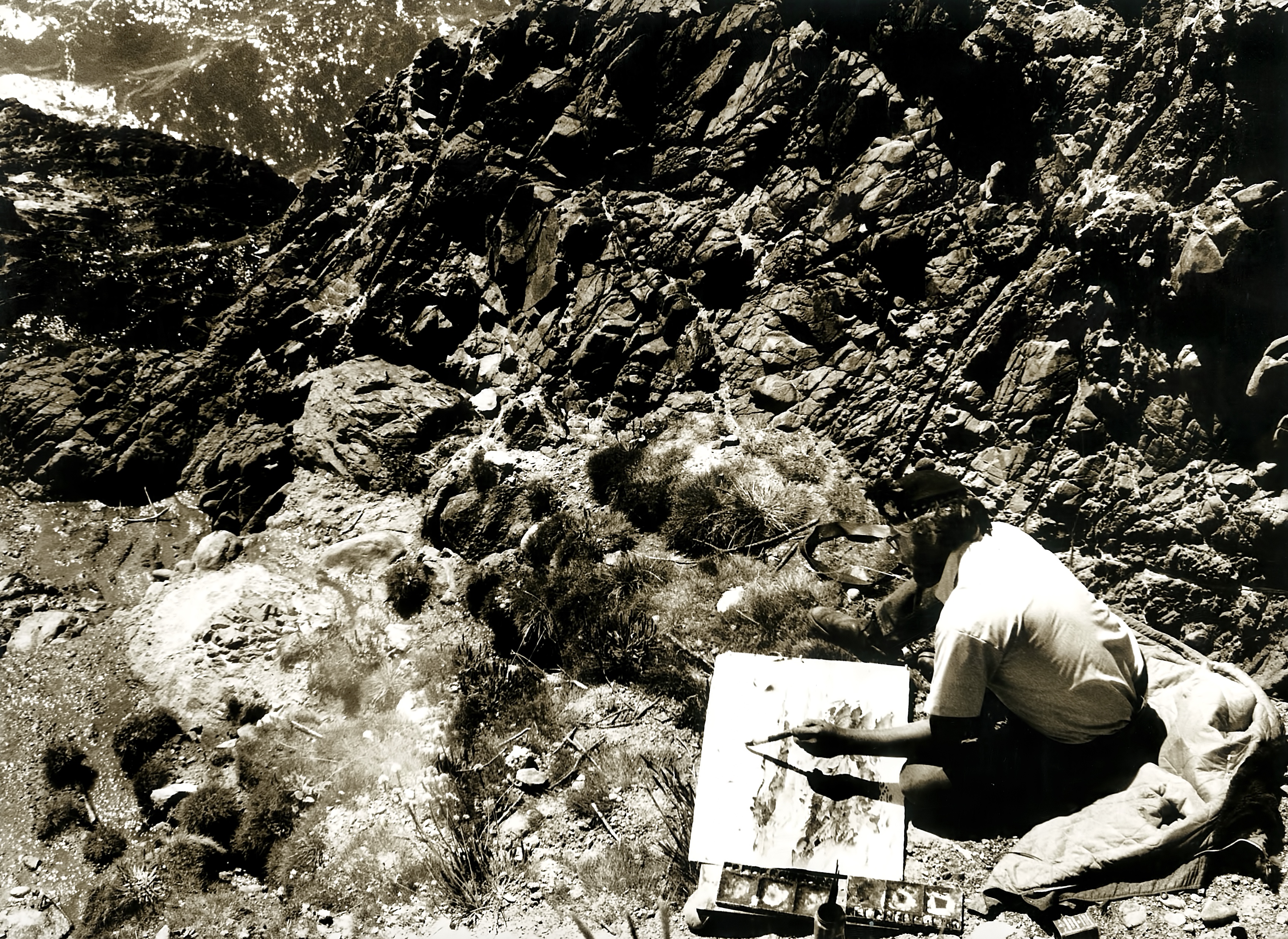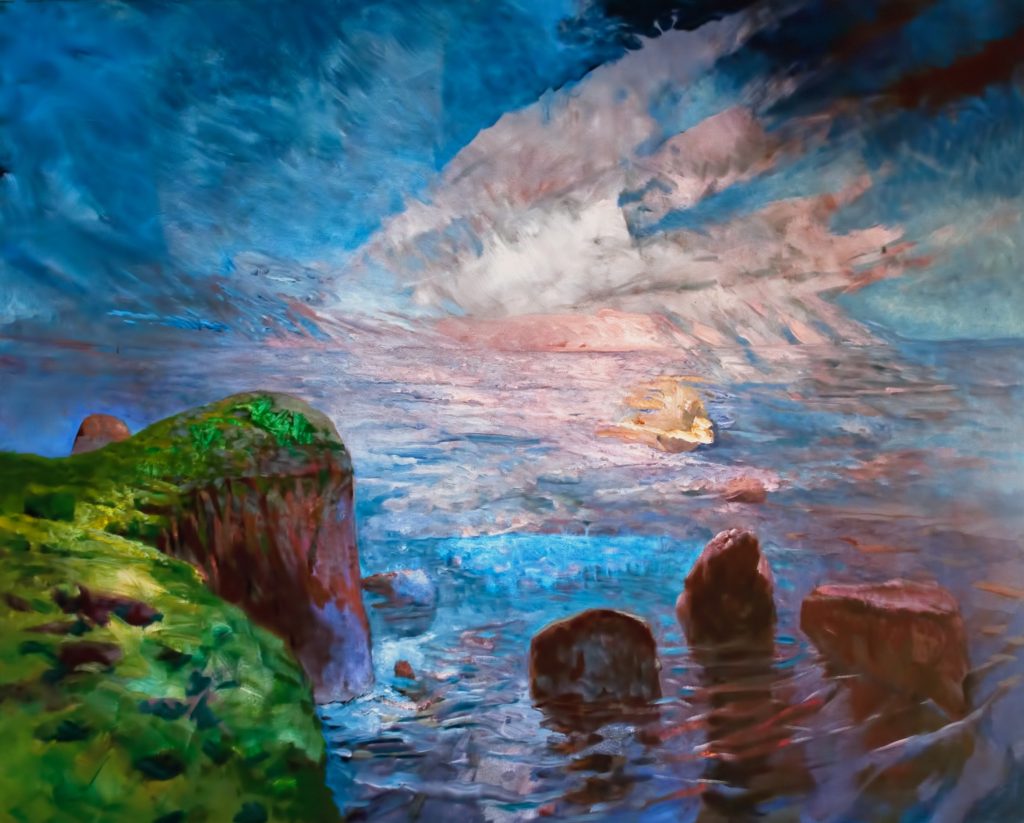A Few Words on Bruce McGrew
by Paul Gold

Bruce McGrew had an immersive approach to teaching art—many of his students felt a vigorously personal pull toward him, an orbit that closely cemented relationships. In interviews in 2006 and 2007, Rick DeMont recalled the power the “McGrew effect” had on him. “I got to U of A as a junior, majoring in art, and one of my first classes was with Bruce—I found him fascinating—he spoke in parables and riddles, like a poet, and in his speech, there was always something between the lines, and it just tuned me in. I was very curious to learn more about this guy—I knew I wanted to know what he knew—there’d never before been a person like that for me, in art or out of art. I had no idea what his art was like. I just knew I wanted to know what he knew, because he knew, and I knew he knew. As abstract as that may sound, that was how it hit me, and from that point on, moments with him were in many ways magic—that’s what he was all about—magic. I don’t know what he thought of me as a student—but that was the beginning of a pretty long relationship.”
“I was already very much of a landscape person when I got there, and I was more into oils at that time, too, but he got me painting outside, and it wasn’t long until I was painting with him outside—I don’t know exactly for how many months. I was also taking classes with [Doug] Denniston, who was also a plein air guy. This was the spring of 1977. When I saw Bruce’s paintings, I was like, ‘Okay, here’s something that adds up to way more than its pieces.’ It still gives me goosebumps to talk about it, because I was so profoundly affected by it visually, and I couldn’t get his paintings out of my head probably for ten or fifteen years. It was just to the point where, ‘Let me exorcise these images, so I can move on with life.’”

“Bruce was really tactical about his approach and where he wanted you to go and what he thought maybe you should be open to. He was pretty delicate—it was the velvet hammer. As soon as I graduated, I moved to the ranch. That was 1979, and so what happened next—I sold this big oil painting at the Gekas Nicholas Gallery. It gave me more money than I thought I deserved, and I took that money and went out to the ranch to live and try to paint, and my life kind of developed from there. I was there for eight years. I loved living out there, but … I realized I would come out with nothing but a great place to live—I needed a little bit more than that, so that was why I left. I came into town, bought a house and started my own thing.”
DeMont’s affection and admiration for McGrew reflect the nearly infectious charisma he had with seemingly everyone he engaged. “Any day with Bruce was just a fantastic day, watching the time pass. He could bring magic into eating food or just walking down the road. He’d just break things down to its core essence, and he lived his life that way, day in and day out, walking around in the core essence. He could find beauty in anything, in any place. And time—he was very connected to that spirit, whatever you wanna call it—the core essence are good words. Maybe some guys would call it bones. I’ve never met a person who was more real than Bruce McGrew—it’s the opposite of hokey. It’s the other direction, floored as far as the road goes.
Excerpted from Paul Gold, Bend in the Wash: The Rancho Linda Vista Artist Community (Tubecat LLC). The book is available for sale at http://interstice.us/paul-gold/index.htm. It is also available at Deadwood Framing and the Tucson Museum of Art.
Category: The Scoop




